|
▼ CLICK A PHOTO TO
SEE FULL IMAGE
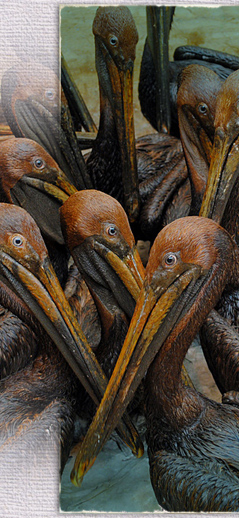
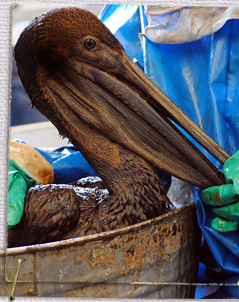
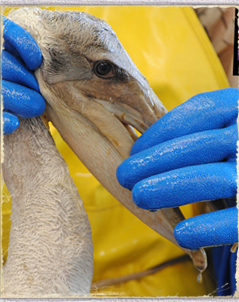
The team spends time at Fort Jackson Bird Rehabilitation Center where International Bird Rescue and Research (IBRRC)cleans oiled birds. Photos © World Animal Awareness Society and Kinship Circle/Gulf Oil Disaster 2010
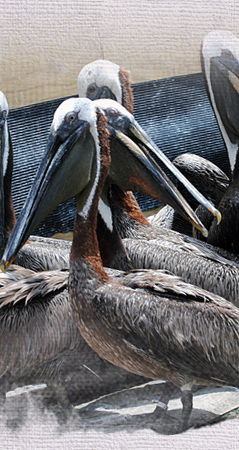

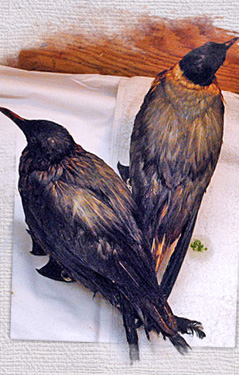
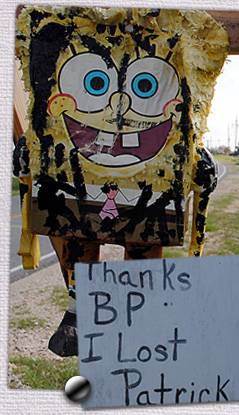
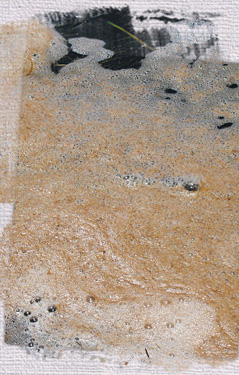
Perdido Key, Florida. Photos © WA2S-Kinship Circle/Gulf Oil Disaster 2010
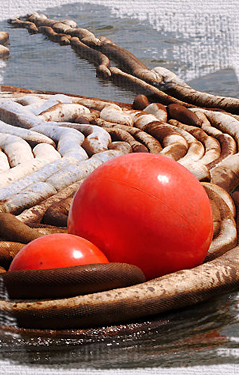
Grand Isle, Louisiana
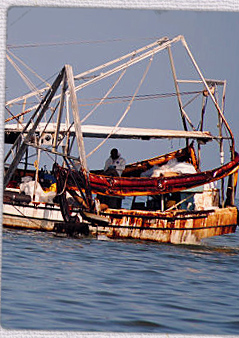
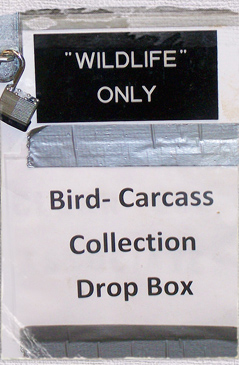
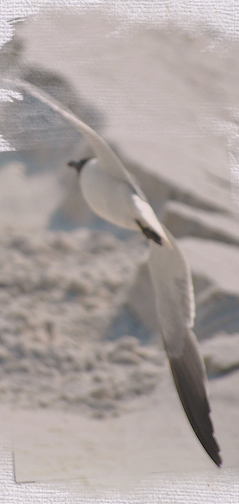
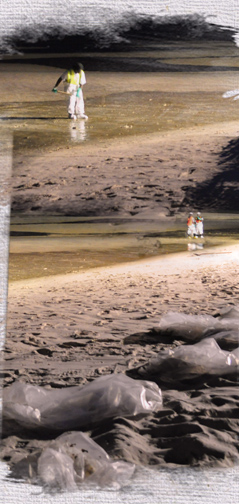
Pass Christian, Mississippi.

Even companion animals are victims in the oil disaster. Loss of livelihood has upped surrenders and overcrowded shelters (like the mortgage crisis did). Photos © WA2S-Kinship Circle/Gulf Oil Disaster 2010
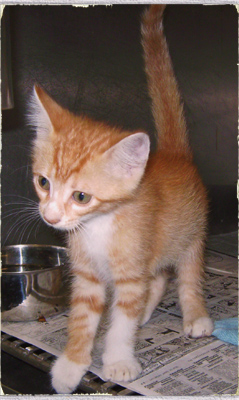
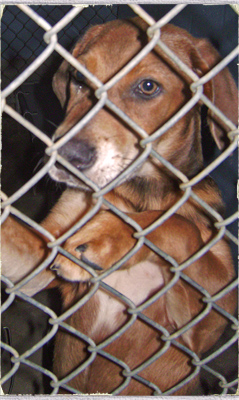
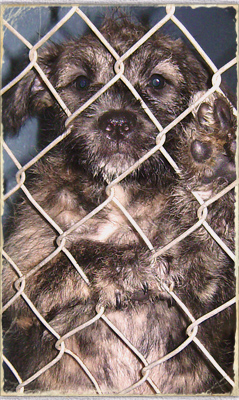
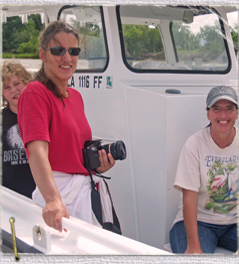
Chauvin, Louisiana - Terrebonne Bay: Team charters full-day boat to search
nesting grounds for oiled animals.
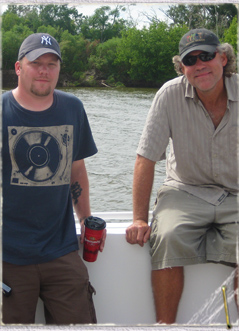
Craig Hill and Grady Ballard are part of a boat team with Kinship Circle Director Brenda Shoss, wildlife photographer Darlene Eschete, Rachel Laskowski, Sarah Rose, Colleen Kessler and husband Gary, Craig Hill, Mary Kelly, Cadi Schiffer.
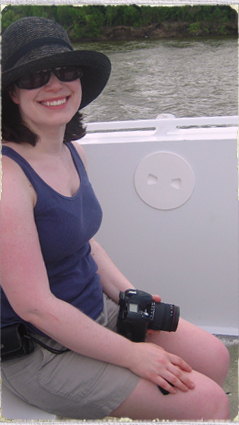
Terrebonne Bay is a vast network of waterways, islands, and bird species harmed in the BP oil crisis. Photo: Kinship Circle's Cadi Schiffer.
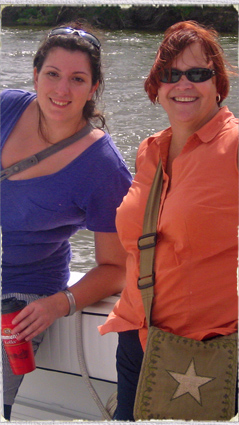
Kinship Circle volunteers Sarah Rose and Mary Kelly.
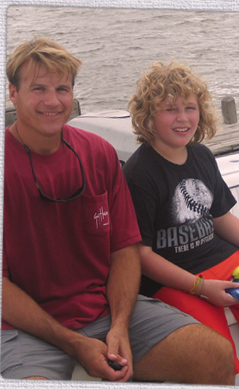
Brenda and Grady's son, Elijah (above, with the boat captain) is also on board to help spot and report distressed animals.
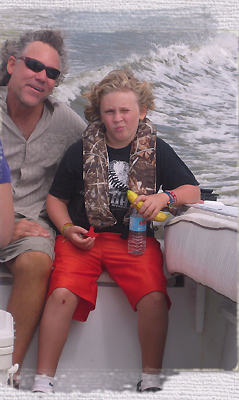
Grady and Elijah head out from the Terrebonne Bay dock toward open Gulf waters.
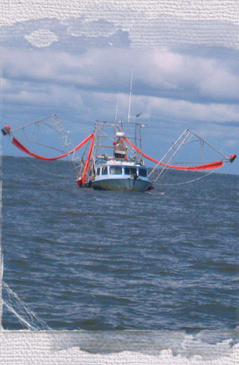
The area is desolate, except for wild animals and this sole BP boom boat.
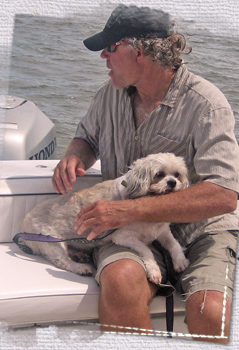
Lhasa Apso (Mandy) on board!
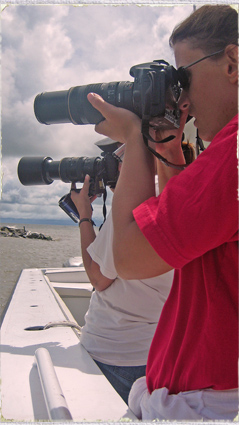
As we circle Raccoon Island, local wildlife photographer Darlene Eschete and volunteer Rachel Laskowski zoom in on hundreds of pelicans, white gulls and other birds.
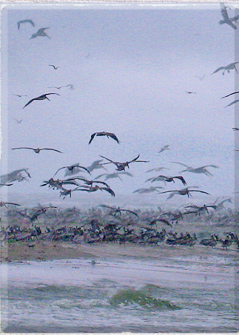
Raccoon Island is one of Louisiana's most heavily populated nesting areas.
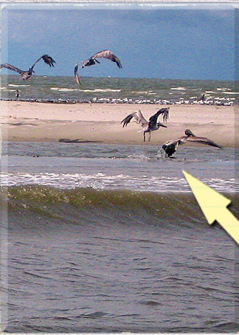
Birds flap and preen in shallow waters. One pelican flaps vigorously, but can't rise. Feathers are clumped, a telltale sign: The bird is oiled.
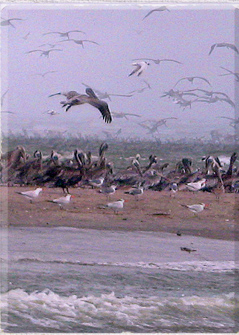
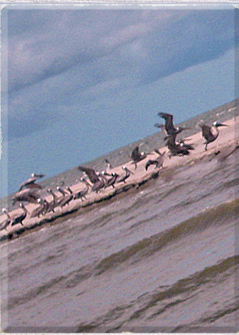
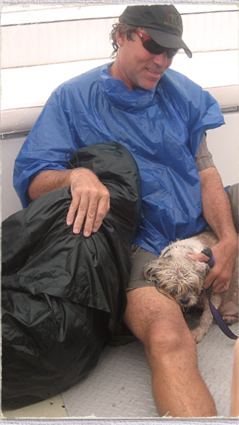
A huge storm moves in, tossing our boat over choppy surf. We huddle under rain gear (and each other) to ride it out.
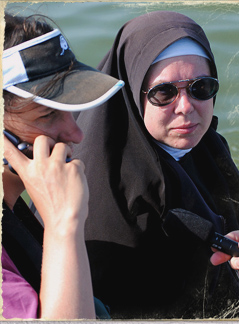
Kinship Circle volunteers Sister Michael Marie and Rachel Laskowski comb nesting grounds and open waters to find distressed animals. When spotted, an oiled animal's GPS coordinates are reported to area Unified Command Centers.
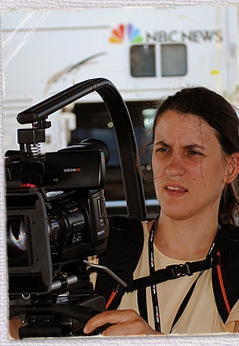
All Eyes On The Gulf Expedition maps oil impacts on habitats and survival. The vision of filmmaker Tom McPhee, disaster-trained Kinship Circle volunteers undergo film training (like Rachel Laskowski in photo) for this unique collaboration.
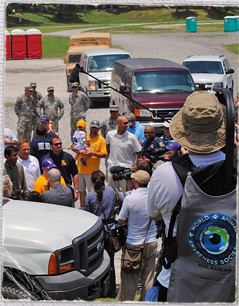
World Animal Awareness Society founder Tom McPhee turns his lens on press conference with Louisiana Governor Bobby Jindal. © WA2S-Kinship/BP Oil Disaster
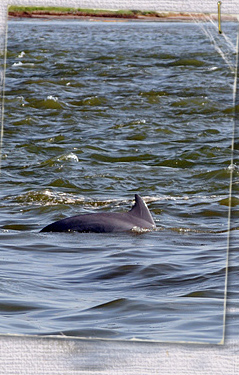
Buras, Louisiana
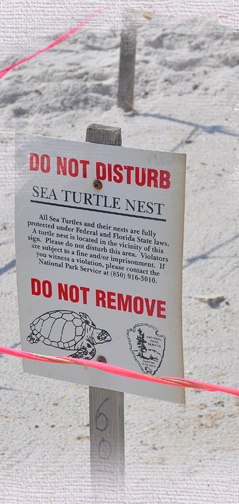
Excavation and relocation of endangered Kemp's Ridley Sea Turtle eggs. © WA2S-Kinship Circle/BP Oil Disaster
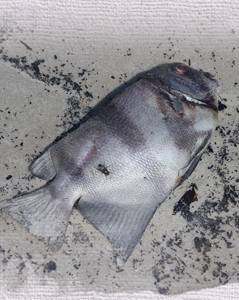
Long Beach, Mississippi

Nearly 200 oiled sea turtles have undergone rehab at Audubon Aquarium in New Orleans. Among survivors, 45 went to a Florida holding facility and 23 were released. Audubon's Meghan Calhoun told Kinship Circle's Brenda Shoss that she hopes future releases occur in Louisiana. © WA2S-Kinship Circle/BP Oil Disaster 2010
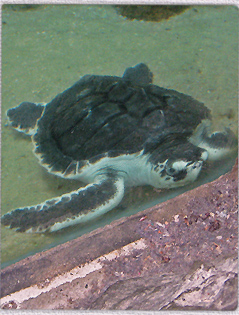
Soon after the Deepwater Horizon crisis, turtles arrived thickly oiled. Brown goop coated their mouths, throats, organs. Boat teams cleaned them at sea before bringing them in.
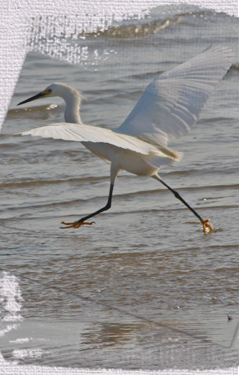
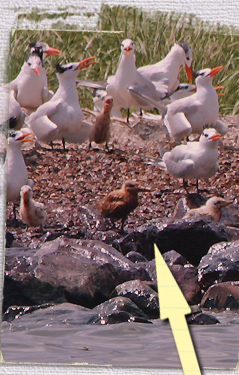
Team #1 finds many oiled baby birds on the shores of Queen Bess Island, Lousiana. © WA2S-Kinship Circle/BP Oil Disaster
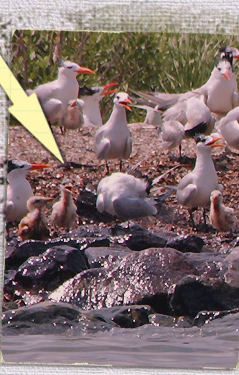
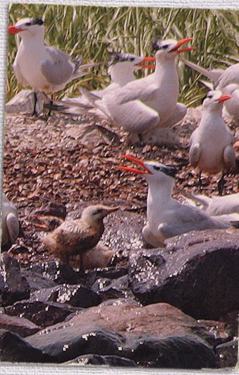
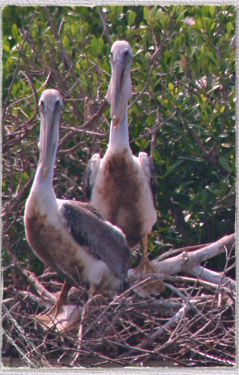
Oiled pelicans are also spotted and their location reported to a command center. © WA2S-Kinship Circle/BP Oil Disaster
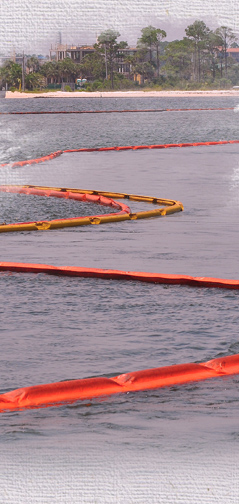
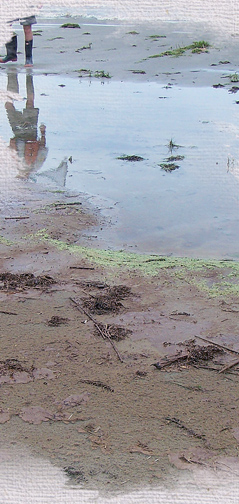
Venice, Louisiana

|
Kinship Circle is focused on wildlife harmed in the Deepwater Horizon disaster. We partner with World Animal Awareness Society to:
- Comb beaches, estatuaries, nesting grounds and open waters — traveling hundreds of miles daily in Louisiana, Mississippi, Alabama and Florida — to find distressed animals and map the oil's present and long-term impact.
- Locate and report suffering animals to area Unified Command Centers.
- Give GPS coordinates and details on oiled wildlife — that expedite rescue and save lives.
- Embed on planes and boats with US Fish And Wildlife, Coast Guard and other agencies/officials to monitor oil damage and wildlife impacts.
- Document the oil disaster's influence on animal habitat and survival.
- Maintain a real-time map that charts our journey in photos, videos, interviews, news.
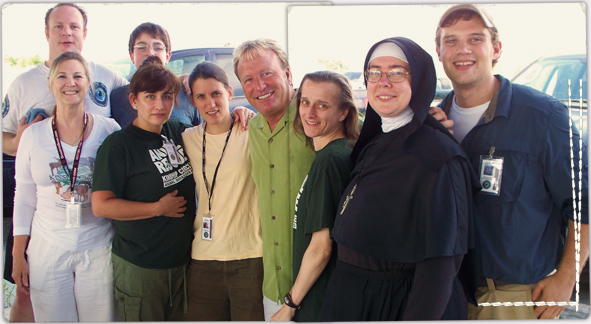 KINSHIP CIRCLE AND WA2S ALL EYES ON THE GULF (AEOTG) TEAM 1 MEMBERS, IN JUNE, FROM LT TO RT: (back row) Documentary filmmaker Tom McPhee and his son Kevin, (front row) Kinship Circle's Bonnie Morrison, Tania Velasco and Rachel Laskowski, Plaquemines Parish coastal director P.J. Hahn, Kinship Circle's Cheri Deatsch and Sister Michael Marie, AEOTG's Jon Shurtz. Photo (c) WA2S-Kinship Circle
OCTOBER 2010
Ecosystems As Far As Canada In Turmoil From Oil Crisis
SUBMITTED BY:
KINSHIP CIRCLE AND WA2S ALL EYES ON THE GULF (AEOTG) TEAM 1 MEMBERS, IN JUNE, FROM LT TO RT: (back row) Documentary filmmaker Tom McPhee and his son Kevin, (front row) Kinship Circle's Bonnie Morrison, Tania Velasco and Rachel Laskowski, Plaquemines Parish coastal director P.J. Hahn, Kinship Circle's Cheri Deatsch and Sister Michael Marie, AEOTG's Jon Shurtz. Photo (c) WA2S-Kinship Circle
OCTOBER 2010
Ecosystems As Far As Canada In Turmoil From Oil Crisis
SUBMITTED BY: Michelle Way
NEWS MEDIA: BP spill threatens a third of Canadian gannets, CBS NEWS

Canadian Birds At High Risk
► 10/21/10, GULF OF MEXICO — NEWFOUNDLAND & LABRADOR, CANADA: Canadian northern gannets of Newfoundland and Labrador are in trouble due to BP's mammoth oil surge into the Gulf of Mexico. Newer research shows 35 percent of eastern Canadian gannets flock to the Gulf each year. "It's difficult to say how many from Eastern Canada have died in the oil spill," says bird biologist Bill Montevecchi of Memorial University of Newfoundland… READ MORE
POP! BANG! BOOM!
► 10/15/10, BAY JIMMY, LOUISIANA: Responders in Venice, LA use noise cannons set to go off every 2-3 minutes. The loud noises scare away birds from oil-impacted areas. SEE VIDEO
|
|
|
NEW OIL DETECTED
► 10/12/10, GULF OF MEXICO: Though plugged in July, oil from BP's rig explosion still washes ashore. An American Birding Association expedition describes Gulf Shores, AL beaches overwhelmed with oil stench… “Floating oil in Barataria Bay north of Grand Terre Island was reddish, snotty stuff in linear slicks, extending down into the water column.” READ MORE
SUCCESS! TURTLE HATCHLINGS SPARED
► 10/9/10, FLORIDA, ALABAMA: As oil closed in on Florida and Alabama beaches, a zero-hour effort to save endangered sea turtles began. Officials and volunteers unearthed turtle eggs by the thousands and moved them to Kennedy Space Center to hatch. Kinship-WA2S teams were involved with relocation of Kemp's Ridley Sea Turtle eggs at Gulf Islands National Seashore. U.S. Fish-Wildlife reports that of 25,000 transferred eggs, 14,676 hatched babies have been released into oil-free waters. READ MORE
LINE OF DEATH
► 10/4/10, GULF OF MEXICO: AP's Rich Matthews dives into the Gulf of Mexico and finds a clear line between living and dead creatures on oil rig supports. A delineation marks where life ends and death begins, with virtually nothing alive above 35 feet. Scientists are uncertain, but say probability is high that reef damage comes from toxic dispersants and oil.
BACK TO TOP - FIELD NOTES LIST
 SEPTEMBER 2010
Spike In Dead Birds Expected; Other Gulf Species At Risk
SUBMITTED BY:
SEPTEMBER 2010
Spike In Dead Birds Expected; Other Gulf Species At Risk
SUBMITTED BY: Michelle Way
CONTRIBUTORS: CNN iREPORT by Darlene M. Eschete (photographer and resident oil monitor who led a Kinship Circle-WA2S boat team through Barrier Islands off Terrebonne Parish) Louisiana Barrier Island, Raccoon Point; PJ Hahn, Plaquemines Parish Coastal Management Director; On Wings Of Care
THOUSANDS OF DEAD FISH
► 9/18/10, PLAQUEMINES, LA: For the third time this Sep, Plaquemines officials report a mass fish kill. Coastal Zone Director PJ Hahn photographs fish so dense, they form a canopy over water. Previous kills were reported in Bay Chaland 9/10 and Bay Joe Wise 9/16. Most fish are menhaden, also called pogie. Fish span at least 1/4 sq. mile with visible oil between them. Hahn wants the area tested for oil impacts.
DEATH IN A BAG
► 9/15/10, TRINITY ISLAND, ISLES DERNIERES, LA: Today, while volunteering with National Audubon Society, boats return with two dead terns from Trinity Island. The birds are placed in a sack, tagged and recorded. Then the transporter drives them to the rehab center in Hammond, LA. I am forced to photograph their “death in a bag” with my cell phone because photos are not allowed in secured areas.
From DARLENE M. ESCHETE, a Louisiana wildlife photographer documenting oil impacts on native animals. She has joined Kinship Circle-World Animal Awareness Society expeditions.
USFWS LIVE-DEAD STATS
► 9/14/10, LOUISIANA, ALABAMA, MISSISSIPPI, FLORIDA, TEXAS: For the first time U.S. Fish and Wildlife Services publicizes details on live-dead collected birds, including entire species and mapped locales. Until now, postings lumped birds by state as oiled, dead or alive. USFWS website lists some 4,676 birds (3,634 dead and 1,042 alive) in oil-harmed areas, while the latest Deepwater Horizon Response Consolidated Fish & Wildlife Report lists 8,009 birds.
|
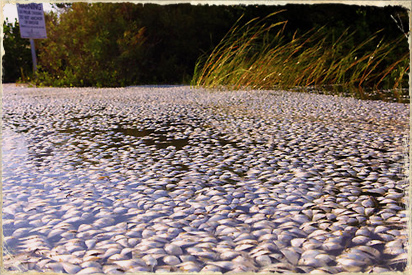
VICTOR SPENCER, GULF SPECIMAN LAB PART 1 OF 5
Volunteers Craig Hill and Rachel McKay Laskowski meet with Victor Spencer, Gulf Speciman Marine Lab, in Panacea, FL.
GREGG HALL INTERVIEW FOR ALL EYES ON THE GULF
Environmental Activist Gregg Hall describes his experiences with tar balls and wildlife in Pensacola, FL.
|
|
BABY WHALE DEAD
► 9/13/10, SOUTHWEST PASS, PLAQUEMINES PARISH, LA: A deceased baby whale washes ashore. Plaquemines Coastal Management Director PJ Hahn is with state Fish and Wildlife as they collect the animal. The Gulf of Mexico is home to roughly 1600 resident whales. Only adult males leave. Females and their young remain in the Gulf throughout their lives.
EXPECTATIONS GROW OF A SPIKE IN DEAD BIRDS
► 9/7/10, RACCOON AND WHISKEY ISLANDS, OFF HOUMA, LOUISIANA: Scientists begin to search Raccoon and Whiskey Islands for birds. Nesting colonies off Terrebonne Parish, previously off limits, will be scoured for about two weeks. Rhonda Murgatroyd, owner of Wildlife Response Services under BP contract for bird recovery, says scientists did not seize oiled birds in rookeries due to risk of disturbing nesting birds and their young. “There was a big outcry about leaving these oiled birds,” Murgatroyd said. Louisiana has about 140 nesting colonies. As of 9/5/10, responders have collected 1,531 live oiled birds and 3,261 dead birds. In June, Kinship Circle volunteers spotted oiled Royal Tern babies along shores of Queen Bess Island, LA. But personnel authorized to handle animals could not risk “trampling” the island as birds nested. We later learned that all these babies perished. Baby birds of species that nest near shores are easily oiled. Active chicks wander along shorelines as crude-stained waters roll in.
BACK TO TOP - FIELD NOTES LIST
 SEPTEMBER 5 2010
Wildlife Photographer Darlene Eschete Revisits Racoon Island — Dead Dolphin We Reported Is Still There!
EXCERPTS FROM:
SEPTEMBER 5 2010
Wildlife Photographer Darlene Eschete Revisits Racoon Island — Dead Dolphin We Reported Is Still There!
EXCERPTS FROM: DARLENE ESCHETE, CNN iREPORT Louisiana Barrier Island, Raccoon Point
LOCATION: Raccoon Island And Barrier Islands Off Terrebonne Parish
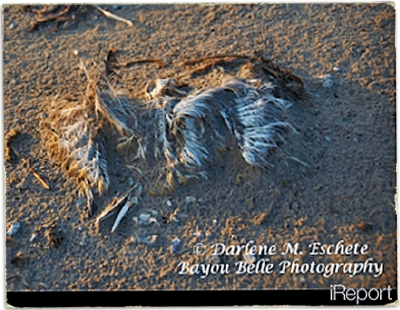
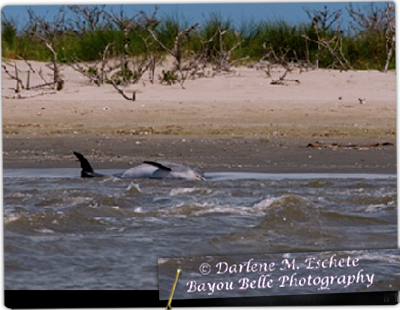
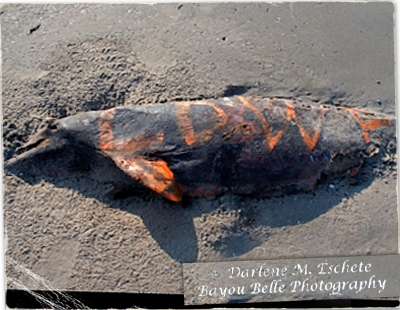
|
9/5/10: I returned to the island I had visited 9 days ago, Coon Point, on a chartered boat with Shawn Carey (Migration Productions), Drew Wheelan (ABA) and Charles Bush (photographer). They wanted to see what others and I have seen… dead birds and the dead dolphin washed ashore that (Kinship Circle's Brenda Shoss had phoned in) to the BP Houma Command Center Hotline.
Our Captain, Bob Lake, took us to the island's eastern point… First, I came across a dead laughing gull. Then another and another. We saw hundreds of terns and thousands of pelicans perched on the rock jetties and sand bar. Many species of waterfowl were present. But, mostly pelicans. An estimated 3000-4000 pelicans remain, from 10,000 strong previously.
We counted 16 dead birds, but I'm sure there were more. All badly decomposed, mostly feathers and bones. I noticed black weathered oil on rocks. At mangroves where pelicans still nested, I scanned the area for dead birds. I saw none. Younger pelicans, still perched in nests, were white with a touch of brown in their feathers.
Making our way back to the surf side, we traveled about a half mile westward and came upon the dolphin spotted nine days ago. It had decomposed pretty bad. The skin took on a rubberized, black look except for the bright orange paint that was sprayed across the body by Louisiana Wildlife and Fisheries Department. “LDWF” it read, in big, bright, orange letters. It was sickening to see an eyeball had popped out of a socket!
Just thinking about how this mammal died… The trauma and pain must have felt devastating. Why did they use so many toxins in our water? If the oil didn't kill, then dispersants mixed with oil did… Others I've called in may have survived. That makes each day I do this worthwhile. MORE
|
BACK TO TOP - FIELD NOTES LIST
 SEPTEMBER 1-4 2010
Black Pellets In The Surf; Another Gulf Oil Platform Explodes
SUBMITTED BY:
SEPTEMBER 1-4 2010
Black Pellets In The Surf; Another Gulf Oil Platform Explodes
SUBMITTED BY: June Towler and Traci Dawson, Kinship Circle Team #7
LOCATION: REGION #2 — Dauphine Island, Alabama
|
|
► SITES-ACTIVITIES, 9/2/10: Scott Rikard, Natural Resources Program Manager for Auburn University Marine Extension & Research Center, shows us an oyster reef where they “grow” oysters from larvae to adulthood. They're concerned about oil damage to next-generation Alabama oysters, now in larval stages. Larvae consume phytoplankton and algae. Oil/dispersant repercussions won't emerge until larvae move into their next growth cycle.
We are again turned away from a BP station on Dauphin Island, with no information from security guards. We proceed to Dauphin Island Beach to check out oil rumors, but are averted by BP security there too. We capture these BP interactions on video. Next, we photograph tar balls on a public beach. Kinship Circle's June Towler accidentally steps on a gooey ball, allowing us to film the residue in her footprints. We encounter five dead crabs here, along with several live ones in the surf. Dead crabs float in a dirty pool of isolated water that a local says emerged over the last few days. Minnow-like fish swim in these separate pools. We see many gulls, two herons and small sandpiper type birds. Ocean waters are a grimy brown. A light oil odor is present. Millions of black pellets pepper the sand where waves roll in and recede. Locals tell us they've never seen the pellets before.
ANOTHER OIL RIG BLOWS
At 9:18am, the Mariner Vermillion 380 gas production oil platform explodes in shallow waters south of Terrebonne Bay, LA. Thirteen crewmembers outfitted in protective “Gumby Suits” escape the blast by jumping into the water. The press reports no causalities and says the non-operating platform is not tied to “oil spill issues.” Houston-based Mariner Energy, Inc. concurs: “In an initial flyover, no hydrocarbon spill was reported.“ U.S. Coast Guard agrees that there is no evidence of a leak. However, USCG Petty Officer Bill Coklough mentions oil sheen, about 100 yards long by 10 yards wide.
ALABAMA MANATEES TRACKED
Our next interview is with Dr. Ruth Carmichael of Dauphin Island Sea Lab. As part of Alabama's Manatee Project, Dr. Carmichael leads the effort to track manatees and assess oil and dispersant impacts on them. Manatees are shoreline marine mammals who encounter contaminated beaches. While no oiled manatees have been found yet, the gentle giants travel long distances. No one really knows what repercussions oil will have on their food sources, reproduction, etc. To report Alabama manatee sightings: 1-866-493-5803, manatee@disl.org
FRUSTRATED ANIMAL EXPERTS
SUBMITTED BY: Rachel Laskowski, Craig Hill
LOCATION: REGION #1 — Grand Isle, Louisiana
► SITES-ACTIVITIES, 9/1/10: We meet Leann Sarco, Interpretive Ranger for Grand Isle Louisiana State Park, to discuss her Hermit Crab Survival Project. Sarco focuses on hermit crabs suffering in huge oil slicks along the park's beach. She has rescued over 7,000 crabs. As we observe her process, we notice oozing oil on the back beach that BP never cleaned. If a shovel digs down a foot or two, a layer of pure oil is exposed. In some spots, one shovel-full reveals oil. Low tide shows oiled sand bars. We are told that surrounding islands share this condition.
|
|
Below, oil is found inside a dead crab at Pensacola Beach, FL. Photos (c) WA2S-Kinship. While interviewing Leann Sarco, we witness relocation of nearly 700 hermit crabs. Sarco, a Grande Isle Louisiana State Park Ranger, seeks supplies and volunteers to support her Hermit Crab Survival Project. Contact Leann Sarco.
On 9/4/10, Plaquemines Parish Coastal Management Director PJ Hahn tells Kinship's Rachel Laskowski: “We've found so many dead hermit crabs, it's unbelievable! This week hundreds of starfish washed up along Pass Chaland. I was too busy to photograph the event, but we had contractors take pictures.”
We also interview wild-animal photographer Darlene Eschete, who reports oiled animals and documents oil impacts. Her emotions run high when speaking about dead birds she has seen. Eschete has just reported a lethargic gull, who flies away as we film. We are still on site when a U.S. Fish-Wildlife boat arrives. Volunteer Craig Hill films the interaction between Eschete and USFW. The agency tells a story about a pelican they proudly rescued who now inhabits Audubon Zoo. Drew Wheelan of American Birding Association later joins us for an interview about his experiences on Grande Isle. He tells us about Royal Tern chick deaths on Queen Bess Island and confesses regret about not rescuing an oiled pelican who swam across the boom to an island. Wheelan is highly qualified, but threatened with fines if he handles animals.
BACK TO TOP - FIELD NOTES LIST
 AUG 22-31 2010
Rescued Sea Turtle Update At Audubon Aquarium
SUBMITTED BY:
AUG 22-31 2010
Rescued Sea Turtle Update At Audubon Aquarium
SUBMITTED BY: Brenda Shoss, Kinship Circle Director, Team #7
LOCATION: REGION #1 — Audubon Aquarium of the Americas, New Orleans, Louisiana
|
|
► SITES-ACTIVITIES, 8/31/10: Audubon Aquarium currently displays 3 rehabbed sea turtles on its ground floor. Upstairs, 1 of 2 turtles has died. Most are endangered Kemp's Ridley sea turtles, along with a Hanksbill turtle. Kinship Circle's Brenda Shoss asks staff about the turtles, but they refer her to Meghan Calhoun in Public Relations. Some 190 oiled sea turtles have come through here. Of those 190, 3 have died. Among the remaining 187 turtles, 45 are transferred to a holding facility in Florida and 23 are released. Just this morning, an unspecified number of turtles are released off Marco Island. Ms. Calhoun says Audubon hopes future releases will occur in Louisiana rather than neighboring states.
Before the Deepwater Horizon rig was plugged, turtles arrived thickly coated in marshmallow-textured oil. Brown goop coated them inside and out, lining their mouths, throats and organs. Boat teams cleaned them at sea before bringing them in. No severely oiled turtles have come in since 8/8/10, Calhoun says, while stressing the crisis is far from over. With 150 turtles still under Audubon care, she's about dispersant effects on animals and people.
Photos © WA2S-Kinship Circle/BP Gulf Oil Disaster
|
|
BACK TO TOP - FIELD NOTES LIST
 AUG 22-31 2010
We Find Oiled Pelican And Dead Dolphin In Barrier Islands
SUBMITTED BY:
AUG 22-31 2010
We Find Oiled Pelican And Dead Dolphin In Barrier Islands
SUBMITTED BY: Brenda Shoss, Director, Team #7
LOCATION: REGION #1 — Raccoon Island And Barrier Islands Off Terrebonne Parish
|
► SITES-ACTIVITIES, 8/27/10: Kinship Circle's Rachel Laskowski arranges a charter boat out of Chauvin, LA into Terrebonne Bay. On board are Kinship Circle Director Brenda Shoss and her husband Grady, local wildlife photographer Darlene Eschete, and Kinship Circle members Sarah Rose, Colleen Kessler and husband Gary, Craig Hill, Mary Kelly, and Cadi Schiffer. Brenda and Grady's son, Elijah (and their dog Mandy!) also join our crew to help spot distressed animals across a vast span filled with nesting grounds.
A DOLPHIN'S SILHOUETTE
Dark skies and rain send BP oil-boom boats back to shore, but we continue to Raccoon Island — one of Louisiana's most heavily populated nesting areas. As we near the linear island's east side, we spot the silhouette of a dolphin amid many pelicans. Her fins are vertical and still, but we coast in as close as possible to verify death.
At 3:57pm, Brenda Shoss notifies Incident Command headquarters of this deceased dolphin's GPS coordinates, and is directed to NOAA's line for marine mammals. NOAA later phones to confirm the sighting and that the dolphin will be picked up for necropsy. All dead animals undergo analysis to determine the role of oil in their death.
A PELICAN CAN'T RISE
We circle the island, also called Coon Point. Hundreds of pelicans align with choreographic precision. Small white gulls stand with their beaks pointed the same direction. Some birds flap wings and preen in shallow waters. We notice one pelican who flaps more vigorously then others. He can't seem to rise from the water. Upon closer inspection, it's clear his wings are separated in clumps, a telltale sign of oil accumulation.
Brenda again calls Unified Command. She is directed to a U.S. Fish and Wildlife voicemail, where she leaves GPS coordinates and a description of landmarks near the distressed bird. USFW never confirms the report.
Resident photographer Darlene Eschete guides our boat captain toward more small islands that earlier this summer were blanketed with nesting eggs. She wants to revisit the isle where she photographed many dead Laughing Gulls. But a storm moves in, tossing our boat over choppy surf. We are pelted with side-swept rain and flung across slick surfaces. We huddle under ponchos (and each other) to ride it out.
|
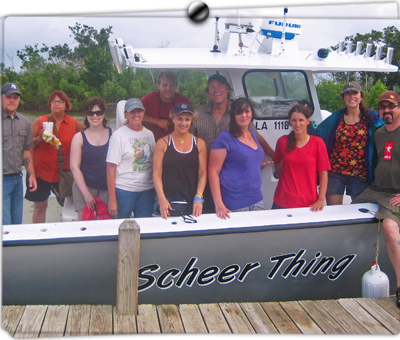
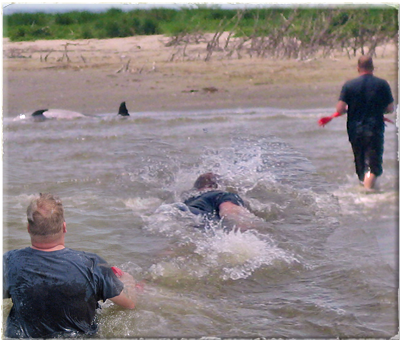
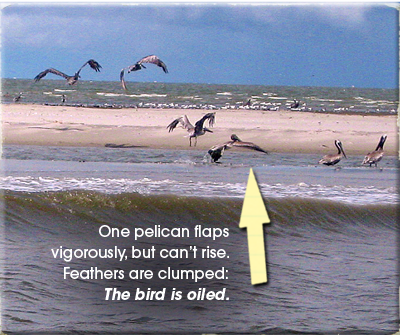
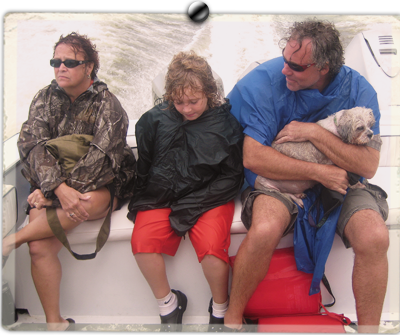
|
|
CHECKING OUT BAYOU SWAMPS AND MORE ON OILED HERMIT CRABS
SUBMITTED BY: Fred Groeger and Jane Allen, Team #6
LOCATION: Atchafalaya National Wildlife Refuge
► SITES-ACTIVITIES, 8/26/10: We head west to explore the bayou, specifically Sherburne Wildlife Management, Atchafalaya National Wildlife Refuge and Bayou Des Ourses. The region is mostly swamp with a levee to the left and campgrounds. As we continue north through the refuge, we spot many turtles, a small rat snake, one young alligator and a broad-winged hawk. No oil is seen.
SUBMITTED BY: Rachel McKay Laskowski and Craig Hill, Kinship Circle Team #7
LOCATION: REGION #2 — Ocean Springs, Mississippi
► SITES-ACTIVITIES, 8/26/10: Darcie J. Graham, M.S. Research Associate, describes detection of oil and dispersants in crabs. She says they work in conjunction with Tulane University's crab project in Grand Isle, LA. In an interview with veterinarian James M. Askew, of Threatened and Endangered Animal Rescue and Rehabilitation, we learn about a large Kemp's Ridley turtle who cannot be released due to the oil disaster.
RESEARCHERS SEE DECLINE IN WHALE SHARK SIGHTINGS
SUBMITTED BY: Rachel McKay Laskowski and Craig Hill, Kinship Circle Team #7
LOCATION: REGION #2 — Ocean Springs, Mississippi
► SITES-ACTIVITIES, 8/25/10: We visit Gulf Coast Research Laboratory, University of Southern Mississippi, to interview Jim Franks, Senior Research Scientist. As a large fish specialist, he worries about oil impact on the Blue Tuna. We also speak to Jill M. Hendon, Fisheries Biologist, about Whale Sharks that have been swimming in oil. She is concerned about the fate of these top feeders and notes that their numbers have decreased. Harriet Perry, Director of the Center for Fisheries Research and Development, concedes off-camera that her legal staff advises her to not talk about oil and dispersants in crabs.
WILL DISPERSANTS KILL BACTERIA THAT DIGESTS OIL?
SUBMITTED BY: Rachel McKay Laskowski and Craig Hill, Kinship Circle Team #7
LOCATION: REGION #2 — Panacea, Florida
► SITES-ACTIVITIES, 8/24/10: First stop is Gulf Specimen Marine Lab in Panacea, FL to meet with Victor Spencer for an in-depth tour. We interview him about a Kemp's Ridley turtle with bacteria decay. This turtle with a disintegrating shell was found at an unusual location in August. Pollution triggered the bacteria that killed him and Victor feels the oil and dispersants may be a root cause. We discuss tests for water contamination, including university studies that show dispersants are killing plankton. Victor asks: Will dispersants also kill the bacteria that digest oil (bioremediation)?
OILY STRANDS IN WATER; NOW MORE DEAD OIL BIRDS THEN LIVE ONES
SUBMITTED BY: Fred Groeger and Jane Allen, Kinship Circle Team #6
LOCATION: REGION #1 — Venice, Louisiana and Hammond, Louisiana
► SITES-ACTIVITIES, 8/23/10: Kinship Circle's Fred Groeger embeds with Chris Pincetich of Sea Turtle Restoration Project (STRP). At 39 miles out from Venice, LA, divers submerge in wet suits while Chris snorkels near an oil rig. Chris and Scott Procter return with coral samples to assess. Divers report two black tip sharks, one Kemp's Ridley turtle, a large redfish, and many smaller fishes. Fish numbers are down.
Experienced diver Deb Castellana, of Bluewater, refuses to enter the water because she doesn't “like the look of it.” At one spot, the water is a dark olive green rather than its normal blue-green. Divers say ropey strands hang in the water. On our return to Venice, we stop three times to observe naturally occurring “foam fractation” flecked with brown spots and strings believed to be oil. Both boats gather samples for analysis and we record GPS coordinates. We see no sign of U.S. Fish and Wildlife, Coast Guard or BP.
On a separate track, Kinship Circle's Jane Allen is in Hammond, LA to tour International Bird Rescue Research Center. A bird with “old oil” is used to demonstrate clean-up. IBRRC Executive Director Jay Holcomb says older oil never completely comes off. Many “old oiled birds” are now brought in from rookeries where earlier rescue would have caused extensive damage to un-hatched eggs. IBBRC sees roughly 4-5 oiled birds daily, mostly fledglings, with 10 oiled birds in house. A total 220 birds are on-site, compared to over 500 birds (150 laughing gulls, young pelicans and spoonbills) two weeks ago. Oiled birds are stabilized, cleaned and released in Florida, Georgia and Texas.
TURTLES, DOLPHINS, AND BEACH CLEANUPS
SUBMITTED BY: Fred Groeger and Jane Allen, Kinship Circle Team #6
LOCATION: REGION #1 — New Orleans, Louisiana and Waveland, Mississippi
► SITES-ACTIVITIES, 8/22/10: We visit Audubon Aquarium where three rescued Kemp's Ridley sea turtles recover. About 20 turtles and one dolphin now reside at the Freeport-McMoRan Audubon Species Survival Center on the Westbank in New Orleans. We then travel to Waveland, Mississippi to meet Chris Pincetich of Sea Turtle Restoration Project. Chris digs for oil reportedly three feet down in the beach sand. At 18 ft. he finds no sign of oil. Volunteers then drive along the shore, photographing portable lights spaced several hundred yards apart. Beach cleaners work under these lights at night, to avoid daytime heat.
BACK TO TOP - FIELD NOTES LIST
 AUG 7-20 2010
3,000 Dead Laughing Gulls. Why Doesn't The Public Know?
SUBMITTED BY:
AUG 7-20 2010
3,000 Dead Laughing Gulls. Why Doesn't The Public Know?
SUBMITTED BY: Fred Groeger and Jane Allen, Kinship Circle Team #6
LOCATION: REGION #1 — LA: Grand Isle, Mangrove Isle, Bay Jimmy, Queen Bess Isle

|
Finding Animals
► SITES-ACTIVITIES, 8/20/10: We join an USFWS boat trip to heavily oil areas off Grand Isle. Our first stop is Mangrove Island, a large rookery for pelicans and other sea birds. Earlier, Kinship Circle volunteers Esther Regelson and Darla Wolak spotted an oiled Roseate Spoonbill here, clinging to a boom to keep from drowning. Rescued that day, this spoonbill was recently released.
Oil booms still encircle Mangrove Island. Our boats are not permitted inside. From about 50 yards offshore, we see hundreds of pelicans fly and perch atop booms.
Though nesting season is nearly over, we spy a few unfledged birds. Oil residue stains mangrove roots. While there, a BP-affiliated Great Britain crew interviews USFW biologist Rick Hansonand and LA Fish-Wildlife biologist Keith Cascio. We inquire about the number of oiled pelicans found. Cascio says, “I don't like to talk about dead animals, but we've found 3,000 dead laughing gulls.”
Our next stop is Bay Jimmy, a grassy marshland where oil booms crush grasses. Rick Hanson says there is no way to remove booms without more damage. An experimental method, in conjunction with BP, begins in days. Once booms are gone, contaminated soil must be removed. No one knows what will replace depleted soil. Our final destination is Queen Bess Island. Like Mangrove, booms encircle this huge pelican rookery. Shores are oily.
|
|
|
WHY DOESN'T THE PUBLIC KNOW MORE?
We learn that 3,000 laughing gulls (like bird in top right photo at at Fort De Soto Park, Pinellas County, FL) are dead from oil. Yet this death toll is publicly unknown.
Volunteer Rachel Laskowski photographed hundreds of Royal Terns and their babies along oily edges of Queen Bess Island. Yellow chicks were stained brown (bottom photo). American Birding Assoc. Director Drew Wheelan tells us all these babies have since died. Photos (c) WA2S-Kinship
DEEPWATER RIG IS “DEAD, DEAD, DEAD.” WHAT ABOUT ANIMALS?
SUBMITTED BY: Fred Groeger and Jane Allen, Kinship Circle Team #6
LOCATION: REGION #1 — Venice, Louisiana
► SITES-ACTIVITIES, 8/19/10: We attend a press conference with Interior Secretary Ken Salazar. A boat tour will visit restored parts of Delta National Wildlife Refuge — 49,000 acres with imperiled species such as the American alligator, brown pelican and Arctic peregrine falcon — closed to the public since April. Once there we're told only “pooled press” may join Sec. Salazar in the refuge. The restriction strikes us as odd since ALL EYES ON THE GULF has been in the field identified as documentarians for months. We stay to film the news briefing, which includes NOAA Administrator Jane Lobchenco and EPA Administrator Lisa Jackson. Sec. Salazar declares that “we're nearing the end of Chapter One of this disaster.” Over the next 10-15 days, the Deepwater Horizon rig will be “dead, dead, dead.” Chapter Two will cover cleanup and restoration. EPA's Lisa Jackson delivers a personal message about her own heritage as a third-generation Louisianan. NOAA's Jane Lebchenco speaks briefly about the future, touching more upon restoration.
OIL DISASTER IS GOOD NEWS IF YOU ARE A SHRIMP!
SUBMITTED BY: Fred Groeger and Jane Allen, Kinship Circle Team #6
LOCATION: REGION #1 — In Louisiana: Venice, Belle Chasse, Port Sulfur, Bura
► SITES-ACTIVITIES, 8/18/10: First, we tour Plaquemines Animal Welfare Society (PAWS) in Belle Chasse with Jacob Stroman. The tiny rescue (20 dogs, 80 cats) moves to larger digs in September. PAWS can only verify two oil-related surrenders, though Mr. Stroman notes a dramatic rise in drop-offs since the spill. He is unable to confirm cause. We next visit Myrtle Grove Marina, Port Sulfur. We interview a local resident, off the record, about his unofficial test of Evolve, a natural cleaning agent. Our stop at Joshuas Marina in Buras, LA reveals many shrimp boats, grounded by oil.
WHERE DID ALL THAT OIL GO?
SUBMITTED BY: Fred Groeger and Jane Allen
LOCATION: Ocean City, Mississippi
► SITES-ACTIVITIES, 8/16/10: We head west to Davis Bayou Gulf Islands National Seashore. A ranger there blames oil for sparse tourism. But they've seen no oil for weeks. We proceed to Institute for Marine Mammal Studies for a tour with Delphine Vanderpool, M.D. After the spill, IMMS mostly saw dead turtles. Since July some 35-40 hooked turtles have been admitted, compared to an annual 1-2 turtles pre-spill.
Green turtles, a hooked hawksbill, and a loggerhead are in rehab here. The oiled turtles are from Alabama. The young hawksbill is very sick, yet today he consumes some food. The loggerhead, 2-3 years old, was found clinging to a buoy. They are concerned about changes in his blood work. Two weeks earlier, a 200+ pound loggerhead (50 to 70 years old) came from the Mississippi Sound area with shark mutilations on three flippers. IMMS hopes to raise funds to build her a pool. Necropsy data from a dead dolphin recorded by Team #2 is inconclusive, but government-lab tissue samples are not yet analyzed.
|
MOST AGREE THAT LONG-TERM OIL IMPACTS ARE UNKNOWN
SUBMITTED BY: Dennis Pickersgill and Jua-Lezza Ayala, Kinship Circle Team #5
LOCATION: REGION #1 — Barataria-Terrebonne National Estuary, Louisiana
► SITES-ACTIVITIES, 8/11/10: We meet with Public Involvement Coordinator Mel Landry at the Barataria-Terrebonne National Estuary Program. Next door at Nicolls State University, Landry stores animal supplies. Donations, received at Grand Isle, support Louisiana Wildlife and Fisheries. An EPA grant funds Landry's initiative, not BP. In part, the program operates as a nonprofit that can accept donations. We ask Landry for his overview of the oil crisis. He notes less clean-up crews, but says wildlife efforts are still underway. He says long-term impacts are unknown and that a nationwide response will endure for some time.
THREE OIL DISASTERS: SHORELINES, WATERWAYS, DEEP WATERS
SUBMITTED BY: Dennis Pickersgill and Jua-Lezza Ayala, Kinship Circle Team #5
LOCATION: REGION #1 — Plaquemines Parish, Louisiana
► SITES-ACTIVITIES, 8/10/10: We meet with P.J. Hahn, Director of Coastal Management in Plaquemines Parish, who is unable to give us a formal interview. He wants permission from parish president Billy Nungesser, but agrees to speak off the record. He shows us video and photos that span early-stage oil relief to the present. Despite a government/BP rosy picture, Hahn believes that dangerous oil lurks underneath waters and beach sands. He shares disturbing footage of black ooze bubbling from a crab hole that his colleague has stepped on. We suggest Hahn revisit these spots for a then/now type comparison.
Upon leaving, we bump into Oky Flemming, inventor of the “Oilevator” device that extracts oil below surface levels. He assures us his device is marine-life safe. BP has yet to connect with him, even though below-surface oil removal has no set regimen. Later we meet with Samantha, a marine biologist, and Deb, both from Ocean Blue, at the Astor hotel. They've viewed oil from the skies and stress a perspective we've not heard before. There are three oil spills: One occurs on shorelines, another in open waters. The third takes place in deep waters. From a scientific stance, Samantha says finned fish will survive. But filter feeders such as oysters, shrimps, and crabs will need years of restoration that Samantha thinks BP should fund.
1,415 BIRDS RECOVER AT HAMMOND WILDLIFE REHAB CENTER
SUBMITTED BY: Dennis Pickersgill and Jua-Lezza Ayala, Kinship Circle Team #5
LOCATION: REGION #1 — Hammond Wildlife Rehab Center in Hammond, Louisiana
► SITES-ACTIVITIES, 8/9/10: Today's tour at Hammond Wildlife Rehab Center reveals ample space and equipment for wildlife recovery. Oil impacted birds are received daily. Yesterday's intake of 20 birds brings Hammond's present total to 400, with several ready for release. To date this center has rehabilitated 1,415 birds, mainly pelicans and laughing gulls. They also help turtles and other bird species. No cleaned birds have returned, which suggests oil cleanup is working. We observe pelican washing, a skill for qualified experts only because it is extremely stressful for animals. A BP rep is always on hand. So far, there have been no problems negotiating supply needs for a humane wildlife recovery effort.
BACK TO TOP - FIELD NOTES LIST
 AUGUST 3-6 2010
NOAA Finds Loggerhead Turtle With Disintegrated Fins
SUBMITTED BY:
AUGUST 3-6 2010
NOAA Finds Loggerhead Turtle With Disintegrated Fins
SUBMITTED BY: Dennis Pickersgill, Jua-Lezza Ayala, Kinship Circle Team #5
LOCATION: REGION #2 — LA: Gulf Breezes, Florida; Gulf Shores, Alabama
|
► SITES-ACTIVITIES, 8/6/10: We tour Institute For Marine Mammal Studies in Gulfport, MS. Guide Meagan Broadway says they've received no live dolphins, but have accepted 15 dead ones. A rising number of turtles come in alive or dead from oil. Many are injured or killed in fishing lines. Dr. Delphine Vanderpool believes contamination propels turtles inland, often in the path of fishing operations. NOAA recently delivered a large Loggerhead Turtle with her fins nearly gone. She was rescued about 16 miles from Dolphin Island and no one knows how her fins disintegrated.
THE DOLPHIN LADY
SUBMITTED BY: Dennis Pickersgill, Jua-Lezza Ayala, Kinship Circle Team #5
LOCATION: REGION #2 — Gulfport, MS
► SITES-ACTIVITIES, 8/5/10: We meet with Lori Deangelis, a.k.a. "The Dolphin Lady," in Orange Beach, AL for a cruise in Back Bay Waters. Lori is concerned about long-term effects of oil on calves and pregnant moms. She's already seen glandular areas harmed. We advise her to record each abnormality seen.
We next visit Theodore Wildlife Rehab Center in Theodore, AL, a facility equipped to handle numerous birds and other species. We view the cleaning process for several birds. An enormous amount of training is required to handle oiled animals. We gain a clearer picture of what these animals endure before detoxified and released. Presently, some 30 to 40 birds recover at the Center.
|
FLEDGLINGS ASK FOR HELP?
SUBMITTED BY: Dennis Pickersgill, Jua-Lezza Ayala
LOCATION: REGION #1 — Barrier Islands
► SITES-ACTIVITIES, 8/4/10: From Grand Isle, LA we embed on a charter boat with Tom McKenzie of Louisiana Fish-Wildlife, to view bird-habitat barrier islands. We pass a mass clean-up effort with floating hotels for workers. A 36-inch pipe sucks up oil. Still, boat hulls are stained brown from oil. No birds inhabit oily Hospital Island. Other islands are covered with birds. Do birds know Hospital Island is polluted?
According to Jared, with Louisiana Fish-Wildlife, fledglings sometimes approach boats as if asking for help. He's rescued 72 birds while stationed here. Our guides tell us that cleanup has improved, even though much more is needed. Animals also risk harm when rescuers inadvertently disturb habitats or overly acclimate younger animals to humans.
OIL CLIMBS FOOD CHAIN
SUBMITTED BY: Dennis Pickersgill, Jua-Lezza Ayala
LOCATION: REGION #1 — Grand Isle, LA
► SITES-ACTIVITIES, 8/3/10: We revisit Grand Isle, LA to interview and help reset traps for Shae Craine, the Tulane grad student studying crab/shrimp larvae. Oil inside larvae resembles orange blobs and shows up in juvenile crabs too. Her new study has not yet assessed long-term damage. Larvae live at the bottom of the food chain. Concern deepens about oil ascending the chain. If shrimp and crab survive with ingested oil, effects will climb to marine mammals and humans.
|
|
BACK TO TOP - FIELD NOTES LIST
 JULY 26-28 2010
Atlantic Bottlenose Dolphin Is Dead On Key Largo Shores
SUBMITTED BY:
JULY 26-28 2010
Atlantic Bottlenose Dolphin Is Dead On Key Largo Shores
SUBMITTED BY: Darla J. Wolak, Kinship Circle
LOCATION: REGION #3 — Key Largo, in South Florida
|
► SITES-ACTIVITIES, 7/28/10: Marine Mammal Conservancy (MMC), in Key Largo, FL, receives a call from U.S. Fish and Wildlife about a deceased dolphin. With MMC responders on alert, a boat is deployed to retrieve the animal and a necropsy is scheduled. As a previously trained volunteer with MMC, Kinship Circle's Darla Wolak is able to participate in the event.
MMC's director recovers a dead Atlantic Bottlenose Dolphin whose organs are exposed. It takes four strong men and a towrope to haul the 6-foot dolphin ashore and hoist him onto a truckbed for transfer to the necropsy area. Everyone uses Vicks menthol rub to mask an overpowering smell of decomposition. Initial necropsy results reveal highly unusual parasites in the animal's lungs and suggest death is parasiste related. A shark attack occurred post-mortem. Sample analysis will provide more answers.
|
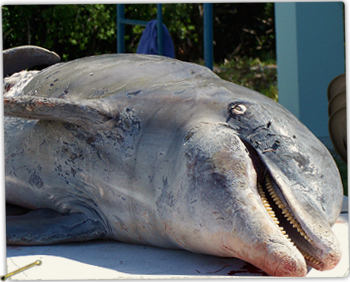
Photo (c) Darla Wolak, Kinship Circle 2010
All marine mammal deaths are tested for oil impacts. In a necropsy, the dolphin's wounds and internal organs are examined. Life history samples, along with toxicology tests, are preserved before the carcass is disposed.
|
ENDANGERED SEA TURTLE EGGS MOVED FROM PATH OF OIL
SUBMITTED BY: Brian Truitt and Shawndra Michell, Kinship Circle Team #4
LOCATION: REGION #2 — Gulf Breezes, FL; Gulf Shores, AL
► SITES-ACTIVITIES, 7/23/10: Today we document the excavation and relocation of 89 Kemp's Ridley Sea Turtle eggs at Gulf Islands National Seashore, Fort Pickens Area. Anne Callenia and other U.S. Parks and Recreation employees meet with our team, press, and citizens there to witness the excavation. At the excavation site, key staff include: Nina Kelson, Acting Superintendent of U.S. Parks and Recreation Department; Rick Clark, Science and Resources Management; Lorna Patrick, USFWS Sea Turtle Biologist; LTC. Louis Roberson, Regional Director of Florida Fish and Wildlife Conservation Commission; Mark Nicholas, District Biologist with Gulf Islands National Seashore; and Lisa M. McInnis, NPS Resource Advisor.
The excavation begins at 5:00 pm. For the next 25 minutes, excavation staff delicately gather golf-ball size eggs from nests, to lay them in Styrofoam coolers filled with sand from the nesting area. The coolers, cushioned with shock absorbing pallets, are transported to Cape Canaveral in a climate-controlled tractor-trailer. Upon arrival, the eggs are stored in a temperature-regulated warehouse on Kennedy Space Center grounds until they hatch. BP has spent more than $3 million on Gulf Coast sea turtle relocation.
After the excavation we return to Gulf Chores, AL, where a beach walk reveals more oil pollution. As the tide recedes, dark brown sheen remains. Oil balls litter beaches. No people enter the water. Seashells, crabs, seaweed and other life forms are absent. Kinship's Shawndra Michell has experienced headaches, nausea, nosebleeds and fatigue — during most of our deployment — and agrees to let Brian Truitt film her. Driving west on Highway 182, we find a BP dumping zone where workers bag tar balls and other oil waste for mass burial in a landfill. They work without safety equipment or respirators.
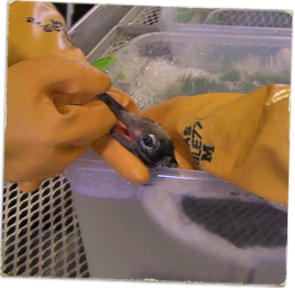
An oiled Laughing Gull is repeatedly washed and rinsed in a long session at Theodore Wildlife.
|
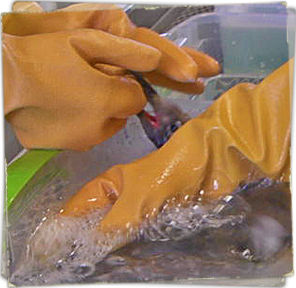
|
RESCUED BIRDS, TAR-BALL MOUNDS, AND MILLIONS OF DEAD FISH
SUBMITTED BY: Brian Truitt and Shawndra Michell, Kinship Circle Team #4
LOCATION: REGION #2 — Theodore, AL; Gulfport, MS; Gulf Springs, AL
► SITES-ACTIVITIES, 7/24/10: We are at Theodore Wildlife Rehabilitation Center where Wildlife Ops Branch Chief Ken Rice begins our tour with an explanation of focus areas:
1) Oil impact on sensitive lands, i.e., federal lands, barrier islands.
2) Oil effects and response to soiled wildlife.
3) Continuing development of rehabilitation centers.
Per USFWS daily consolidated reports, as of July 22, 2010:
BIRDS Collected Alive: 1397, Collected Dead: 2599, Released: 551
TURTLES Collected Alive: 226, Collected Dead: 483, Released: 177
MAMMALS Collected Alive: 5, Collected Dead: 62, Released: 1
OTHER REPTILES Collected Alive: 1, Collected Dead: 1, Released: 0
We travel to Gulfport, MS to follow reports about Millions Of Fish Wash Ashore in Jones Park. A municipal worker tells us that BP quickly disposed of all fish. People are eerily reticent to talk about the mass death. Gulfport's coast is now colored deep chocolate. Our day ends in Gulf Shores, AL. Oil balls litter beaches here. Tar balls are scattered over tire tracks from BP's sand-moving behemoths. These oil globs are weird, sort of like deep-fried seaweed shellacked in stiff molasses.
BACK TO TOP - FIELD NOTES LIST
 JULY 10 2010
A Keen Eye For Oiled Wildlife Saves Lives
SUBMITTED BY:
JULY 10 2010
A Keen Eye For Oiled Wildlife Saves Lives
SUBMITTED BY: Jonathan Shurtz, with WA2S Executive Director Tom McPhee
LOCATION: REGION #2 — Pass Christian and Gulf Port, in Mississippi; Daphne, Alabama

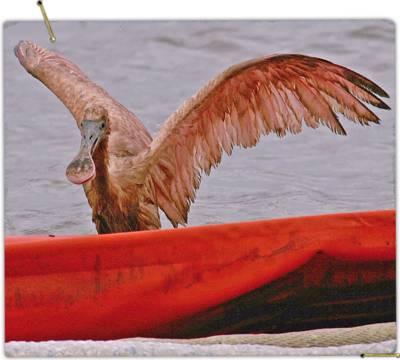

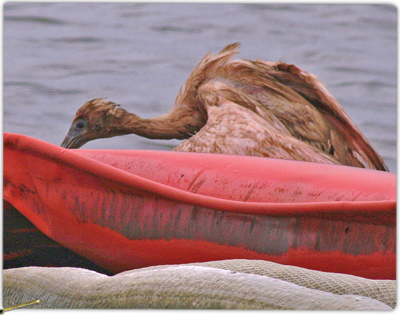
|
► SITES-ACTIVITIES, 7/10/10: We find a lot of tar balls and crude oil along Pass Christian and Gulf Port, MS shorelines. Jon sees two oiled pelicans. He quickly calls Unified Command to relay GPS coordinates. Our report is later confirmed. The oiled pelicans have been collected and transported to the IBRCC bird cleaning operation. Kinship Circle and World Animal Awareness Society are thanked for efforts to spot and report oiled animals. We head to Daphne, AL where a strong oil odor soaks the air.
CLINGING TO LIFE
While investigating Black Mangrove Island, LA, Kinship Circle's Esther Regelson and Darla Wolak spot a juvenile Roseate Spoonbill. The severely oiled bird fights to stay atop an oil boom. The sighting is called in, but our boat captain cannot bear to watch this bird nearly drown. So the bird is caught, brought to emergency triage, and then transferred to IBRRC Fort Jackson Rehabilitation Center. During one of our regular visits to IBRRC, we learn that this bird will live!
Kinship Cirle's Esther Regelson films the capture of an oiled spoonbill.
From Esther's log: We were checking Black Mangrove Island while embedded with USFW. A badly oiled bird struggled to stay on an oily boom, unable to fly. Very difficult to watch. If this juvenile bird fell off the boom, the bird would drown. We called in a report, but one boat captain just couldn't watch any more. He directed his boat over to the bird and grabbed the bird. The bird was taken to Grand Isle marina for emergency triage, then transferred to IBRRC.
Currently, only U.S. Fish And Wildlife and BP-authorized state/federal wildlife personnel are permitted to rescue oiled animals. We comb waterways and islands off oil-affected shores. As spotters we have helped save lives by reporting oiled animals. The video above depicts the rescue of a severely oiled bird.
|
|
BACK TO TOP - FIELD NOTES LIST
 JUNE 28-JULY 5 2010
Dead Dolphin, Possibly Pregnant, Ashore In Mississippi
SUBMITTED BY:
JUNE 28-JULY 5 2010
Dead Dolphin, Possibly Pregnant, Ashore In Mississippi
SUBMITTED BY: Jonathan Shurtz, with WA2S Film Director Tom McPhee
LOCATION: REGION #2 — Pass Christian, Mississippi
|
► SITES-ACTIVITIES, 7/5/10: Tom McPhee and I interview Alan Schwartz, Large Transport Operator for Sumter County, FL Disaster Animal Response Team. His 45-foot climate-controlled truck for animal transport has space for surgeries and can even serve as temp housing. He)s available to transport birds from rehab to the airport for release.
At the Mississippi coastline I photograph tar balls, dead fish, and a lot of July 4th trash. Dispersant residue is evident too. We interview cleaning crews and locals.
While driving along the shoreline at Pass Christian beach, we see a waterside truck with people in masks holding a tarp. Tom asks me to investigate. At the scene, I see the carcass of a large (roughly 100km) female bottlenose dolphin. The dolphin is weighed and tested to discern if pregnant at death. She is abnormally large, with oil residue around her mouth.
|
ESCAPES & RESCUES FROM THE OIL
FROM: Esther Regelson, Darla Wolak
LOCATION: Grand Isle USFW Boat
► SITES-ACTIVITIES, 7/2/10: We search Grand Isle State Park for oil. Whitecaps are tinted yellow, a telltale sign. A photographer shows us a milky substance believed to be dispersant. He confirms that black “turds” washed ashore are tar balls. At the marina, we meet Alan Crabbe of Fish-Wildlife and proceed to Queen Bess Island, then Black Mangrove Island, a rookery with seabirds. USFW crew try to capture a heavily oiled pelican, but the scared bird hops beyond their reach. A circle of the island reveals a heavily oiled Roseate Spoonbill too weak to rise from water. This time, USFW agents successfully rescue the bird.
BABY BIRDS STILL IN NESTS
FROM: Esther Regelson, Darla Wolak
LOCATION: Venice and South Pass, LA
► SITES-ACTIVITIES, 7/1/10: Kinship's Esther Regelson and Darla Wolak meet at Cypress Cove Marina in Venice, where USFW agent Bruce Miller says we have Coast Guard permission to boat, despite Hurricane Alex alerts. We cross the Mississippi into Dennis Pass, and then journey through South Pass before splitting into groups to view different regions. Oil coagulates along shores. A stretch of boom partially barricades the marsh. USFW agents look for dead birds in the marshes. Wildlife biologist David notes a distinct odor when oil nears a shore.
We spot a Common Nighthawk startled from her nest. Darla sees two chicks in the sand. The babies are alive but uncommonly still. We document this odd behavior. Pelicans fly overhead and at least two look oiled. A storm forces USFW to cancel the rest of our tour. We boat back in a heavy downpour.
|
IN OPEN WATERS, ABOARD TANKERS
SUBMITTED BY: Esther Regelson, Darla Wolak Kinship Circle Team #2
LOCATION: REGION #1 — Venice and South Pass, in Louisiana
► SITES-ACTIVITIES, 6/30/10: From the Associated Bar Pilots Office we boat out to a tanker, then switch ships and head toward Southwest Pass. There is no visible oil around Southwest Pass until the very end where water spills over jetties. We are given little time to inspect the island itself, but do see oily grasses and shore. Scooped up grass leaves residue on hands. A pilot boat then takes us out to sea, where we board a tanker with a Japanese crew. Porpoises swim near the jetty, but open waters are too turbulent to detect oil. As we head back, oil slicks reemerge.
SOME OF THE RESCUE EFFORT IS BOUND IN RED TAPE
SUBMITTED BY: Esther Regelson, Darla Wolak Kinship Circle Team #2
LOCATION: REGION #1 — New Orleans and New Iberia, in Louisiana
► SITES-ACTIVITIES, 6/29/10: At 5:30am, Darla Wolak and Esther Regelson are en route to the airport for a pelican transport. Dr. Sharon Taylor says the AEOTGE team must film from outside the gate. Dr. Taylor then enters another building, trailed by a German documentary crew. AEOTGE volunteers follow, but are pushed out by Dr. Taylor because we are not press. Esther calls Chris Tollefson (JIC) who had authorized us, but can't reach him. By now the transport is underway so we're forced to film from a far distance. Later we drive I-10 in heavy rains and flooding to reach New Iberia. Once there, we interview Gary Shiganaka and his NOAA associates about tortoise rescue. We also speak to Louisiana Wildlife-Fisheries Department, an EPA liaison, and NOAA rep Steve Gittings, who is optimistic in the face of the spill.
BIRDS GET PEPTO BISMOL TO SOOTHE OIL INGESTION
SUBMITTED BY: Esther Regelson, Darla Wolak Kinship Circle Team #2
LOCATION: REGION #1 — New Orleans, Louisiana
► SITES-ACTIVITIES, 6/28/10: We return to IBRRC Bird Cleaning Operation to interview director Jay Holcomb. We video oil decontamination of a "masked boobie" and interview IBRRC employee Rebecca about stress coping tools for rescuers. While there, we videotape arrival of an oiled tern wrapped in a towel for veterinary exam. The bird is oral-gavaged with tubing syringe that delivers Pepto Bismol directly into his stomach and relieves oil ingestion. We learn that authorized bird groups hope to determine how to handle fledglings, since they need to be weaned with adult pelicans.
BACK TO TOP - FIELD NOTES LIST
 JUNE 20-25 2010
An Infinite Mess Adrift At Sea
SUBMITTED BY:
JUNE 20-25 2010
An Infinite Mess Adrift At Sea
SUBMITTED BY: Darla Wolak with Esther Regelson, Byron Wilkes, Rachel Laskowski, Team #2
LOCATION: REGION #1 — Copobrie, Louisiana and Houma, Louisiana
|
► SITES-ACTIVITIES, 6/25/10: In Terrebonne Parish we embed with a Coast Guard boat to inspect barrier islands. Wildlife is scarce, due to hurricane damage of habitat in past years. Our captain says over 25 islands have vanished. We record oiled marsh grasses, boats vacuuming and containment booms around all islands. Our team later convenes at Houma Jet Center to join about 13 press members for a Coast Guard flight over the spill site. During take-off, we see small islands engulfed in oil. Further out, oil sheen reflects off water. Then thicker reddish-brown streams are evident. Oil streams swell at the line where water turns deep blue. Boat traffic increases as we near the site awash in dark crude oil. Two or three boats work a skimming system to collect oil globs on surface waters. Two fires burn from pipes at ships/stations.
Personal reflection from volunteer Darla Wolak: Skimmers appear to collect oil by teaspoons, from a vast bathtub of oil. I am struck by the immensity of a job that can never be completed. To see this infinite mess adrift at sea, devouring everything in its path as it creeps toward land and animals, is terrifying.
LOCALS TIRE OF BUREAUCRACY
SUBMITTED BY: Byron Wilkes, Esther Regelson, Rachel Laskowski, Team #2
LOCATION: REGION #1 — New Orleans, Louisiana and Plaquemines Parish, Louisiana
► SITES-ACTIVITIES, 6/21/10: We head to IBRRC in Fort Jackson to film bird cleaning sessions. Nearly 700 birds have passed through, among them: Brown Pelicans, Laughing Gulls, larger seagulls, a variety of terns, and a rare Red Egret. IBRRC director Jay Holcomb says thousands more birds are likely oiled, wirh numbers expected to rise if hurricane season worsens. Six wash stations are equipped with hoses, soap/rinsing agents, towels, etc. Basins and cloths are drenched in oil. HAZMAT clothing, gloves and other materials are disposed after continual 20-minute shifts. Later we speak to PJ Hahn, Director of Coastal Zone Management in Plaquemines. The Parish is upset about pervasive coastal damage. PJ himself inspects every weekend. He says fish swim in oil. Crabs make oily trails. Many birds are oiled too. He worries about protocols under Unified Command that reject trained rescuers and block access to affected areas. The bureaucracy frustrates everyone, he says.
TEAM FOLLOWS OIL LEAD
SUBMITTED BY: Byron Wilkes and Esther Regelson, Kinship Circle Team #2
LOCATION: Terrebonne Parish, Louisiana
► SITES-ACTIVITIES, 6/20-25/10: Volunteers head to Houma in Terrebonne Parish, LA to verify reports of oil penetration in outer small islands and grasslands. Several fishermen inform us that affected areas are about 20 miles off the tip of Cocodrie — a major marina on the Terrebonne coastline.
|
DEEPWATER HORIZON BASE, LOUISIANA: Team members participate in an overflight of ground zero with the U.S. Coast Guard. The Deepwater rig, oil burnoffs and ships are seen from an open-ended plane.
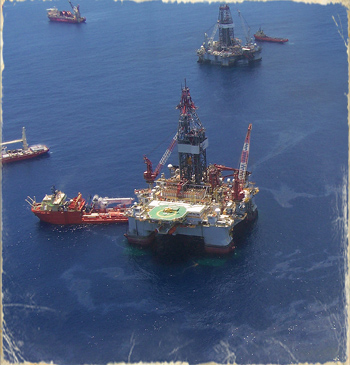
Kinship Circle's Nora Marino described the view as a war zone, with fires, ships and helicopters swarming the scene of the Deepwater Horizon oil explosion. Photos © WA2S-Kinship Circle/BP Oil Disaster 2010
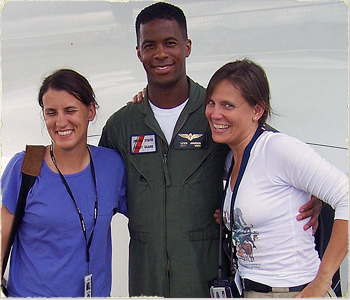
Kinship Circle's Rachel Laskowski and Darla Wolak are on the overflight that initiates from Houma, Louisiana.
|
|
|
The oil feels like a giant monster suffocating the Gulf Coast.
Fishing boats skim oil to slow its relentless seep. Vessels are coated in a gooey red-brown film that eats through paint and corrodes hulls. The boats, like creatures around them, seem doomed. They wearily haul filthy oil booms …
Gulls who normally circle over fishing boats are gone. The area is silent and without movement. A handful of birds, driven by hunger, hover over one oily shrimp boat in anticipation of a bite. Finally, they fly away with empty stomachs. Brown Pelicans occasionally plummet into dark waters to search for food. They are oblivious to the deadly sheen. In some places oil is invisible when mixed with water, though a fine layer coats any creature who dives into it. For pelicans, each dive paints the body in a new toxic layer. Eventually they are flightless.
|
|
BACK TO TOP - FIELD NOTES LIST
 JUNE 18-19 2010
Animals In Oil: Can Unified Command Rescue Them All?
SUBMITTED BY:
JUNE 18-19 2010
Animals In Oil: Can Unified Command Rescue Them All?
SUBMITTED BY: Rachel Laskowski, Jon Shurtz, Tom McFee, Kevin McPhee
LOCATION: REGION #2 — Fort Morgan, Alabama and Destin, Florida
|
|
► SITES-ACTIVITIES, 6/19/10: Kinship Circle's Rachel Laskowski and AEOTGE's Jon Shurtz, with Tom and son Kevin McPhee, drive to Fort Morgan, AL to explore Mobile Bay beach. Two dead birds are sited. Tom speaks to a father-son team with a camera mounted on a sky balloon. They are eager to have their baseline data uploaded to our live map. Tom also speaks to Steve Kolin of EcoRigs.org about use of their underwater footage. When time to leave, we find our vehicle entrenched in sand. Tom asks for help from private contractor with a large beach-crawling rig. He is able to drag our car to level ground. We then travel to Destin, FL to interview Christopher Smith, a local who wants BP to purchase his brand of boom. Unfortunately, sea turtles won't approach this type boom, so it is illegal to position it in front of beachside condos and homes. Mr. Smith informs us that tomorrow BP will meet residents in Orange Beach, AL.
SUBMITTED BY:Byron Wilkes, Team #2
LOCATION: Fort Morgan, AL/Destin, FL
Byron Wilkes drives to Venice, LA to follow up on the turtle rescue operation with Captain Kevin Aderhold, who is under contract with BP to retrieve sea turtles near oil-burning waters. Capt. Aderhold is trying to get our teams aboard boats that for Louisiana Fisheries & Wildlife scientists near the rescue site. Capt. Aderhold advises us to speak to Captain James Hessemer at the dock, to find out what he's seen.
|
|
CAPT. HESSEMER'S OIL NOTES
- BP Unified Command contracts two boats for LA Fisheries-Wildlife to observe oil impacts.
- BP and Coast Guard use dispersants and napalm to break-up oil. Vessels are barred within two miles of the burn-off site, but this may soon widen due to toxicity of daily 10 sq. mile burns.
- Capt. Hessemer believes that seismic cables will be installed to widen barricades for animals, boats or both. Communications must be clear because burn areas shift daily.
- Oil oozes to the north and northeast. Capt. Hessemer has seen one southward flow about 25 miles off shore. If not cleaned, this oil strand will hit shore in several weeks.
- Oil is classified in three types:
- Thick black/red oil: About a half-inch density.
- Sheen: Oily surface cover.
- Dispersant Oil Balls: Pea-sized to golf-ball sized clumps that float two feet below surface. They've seen just one skimmer picking up oil some 54 miles offshore from Venice, LA.
- Wildlife: Two boats have retrieved 64 juvenile Ripley turtles and missed three who dove underwater. Most turtles are recovered near BP oilrig VK989, 30 to 40 miles from shore. Other turtles are captured near rig ELF.
|
- Turtles, crabs and seahorses swim northwest of the site toward clean floating sea grass or seaweed that acts as a natural barrier for oil.
- Captain Hessemer says that a NOAA trailer had cleaned and transported turtles to the English Turn rehab facility. While NOAA handled the first 63 turtles, their trailer is now gone. Apparently an Animal Control Officer took yesterday's juvenile turtle to the Fort Jackson rehab center. I later contact Fort Jackson, but am told the turtle is no longer there…but even if he were, I could not see him without Unified Command approval.
- Other species: Capt. Hessemer has spotted a large pod of Spinner Dolphins in clear waters northeast of the spill and a pod of white dolphins inside an oil encirclement. He is unsure if they can escape by diving beneath oil. He's seen colored ibis 25 miles offshore in clean waters.
- Puffer fish, sargasum and blue runners swim beyond sea grass/seaweed boundaries. At present, several captured puffer fish are not oiled.
Captains Hessemer and Aderhold welcome our presence on board, but cannot make this decision without BP-Unified Command approval. I also speak to three more charter boat captains made inactive by the oil. On a couple trips more than 140 miles at sea, they glimpse large tuna, chicken dolphins and mahi mahi. All seem to swim away from the oil.
|
SEA TURTLES NEED RESCUE FROM OIL-BURNING WATERS
SUBMITTED BY: Bonnie Morrison, Sister Michael Marie, Byron Wilkes, Kinship Circle Team #2
LOCATION: REGION #1 — Headquarters in New Orleans, Louisiana
► SITES-ACTIVITIES, 6/18/10: We follow up on turtle rescue involving Kevin Aderhold, owner of Strike Zone Charters. He has five boats and is under contract with BP to conduct water rescue with Blair Witherington, a research scientist with Florida Fish-Wildlife Conservatory. Aderhold says they catch 1 to 11 oiled turtles daily. He is aware of 64 turtle rescues and two deaths over the last three weeks. The turtles are brought to English Turn Species Rehab Area in Belle Chasse, Louisiana. Kinship Circle's Byron Wilkes tries to clarify whether sea turtles are burned alive when they swim through oil burnoffs. The purpose of the rescue operation, Aderhold explains, is to divert turtles from fiery waters.
BACK TO TOP - FIELD NOTES LIST
 JUNE 15-18 2010
Oil-Caused Income Loss Ups Companion Animal Surrenders
SUBMITTED BY:
JUNE 15-18 2010
Oil-Caused Income Loss Ups Companion Animal Surrenders
SUBMITTED BY: Bonnie Morrison, Kinship Team #1
LOCATION: REGION #1 – New Orleans, Louisiana
SUBMITTED BY: Bonnie Morrison, Kinship Team #1
LOCATION: REGION #1 – New Orleans and Belle Chasse, in Louisiana
► SITES-ACTIVITIES, 6/15-18/10: Over the last several days, our attention turns to other victims of this disaster: Surrendered companion animals. We begin to investigate how loss of livelihood (much like the mortgage crisis) leads to abandonment of domestic animals.
Kinship Circle's Randy Wheat, Sister Michael Marie and Bonnie Morrison interview Tessa Corthell, Jefferson Parish LASPCA Director, regarding the oil spill's impact on economy and families with companion animals. The shelter is currently filled to capacity. We next tour Animal Rescue New Orleans (ARNO) in Harahan, LA and speak with the shelter manager. Kinship Circle's Randy Wheat conducts a phone interview with ARNO Executive Director Charlotte Bass. Kinship Circle Mary Kelly arranges for AEOTGE to attend a shelter task force meeting. An attending member suggests that AEOTGE Director, Tom McPhee, set up a hotline or email for the public to report the spill's economic effects on people and their animals.
Jacob Stroman of PAWS Rescue in Belle Chasse, LA tells us this shelter does not see oil spill repercussions for companion animals. However, there is a push for pet food and pet food bank donations in Ft. Sulpher, LA. PAWS is a no-kill shelter with a waiting list. Animal guardians fluctuate from anger to pride or shame when relinquishing pets, so it is sometimes difficult to discern the real reason.
BACK TO TOP - FIELD NOTES LIST
 JUNE 16 2010
Engulfed in Silence And The Absence Of Birds
SUBMITTED BY:
JUNE 16 2010
Engulfed in Silence And The Absence Of Birds
SUBMITTED BY: Sister Michael Marie and Randy Wheat, Kinship Team #2
LOCATION: REGION #1 — Lafitte, Louisiana; Barataria Bay, Louisiana
|
► SITES-ACTIVITIES, 6/16/10: We attend a Town Hall meeting with Mayor and council members of Lafitte, Louisiana. In addition to team members, others who join our boat excursion from Lafitte include: Mayor Timothy Kerner, Jefferson Parish Councilman Chris Roberts, Councilman at Large Tom Capella, Jefferson Parish Council Chief Of Staff Sonny Burman, Washington Post Pulitzer Prize photojournalist Carol Guzy, local Fox 8 news and two more news teams, Lt. Commander Michael Heiser (Coast Guard Liaison for Parrish EOC), and photographer Michael Melsheimer.
|
From Lafitte we travel to Barataria Bayou, past Queen Bess Island. Team members record a FOX News interview with Mayor Kerner and photograph birds in flight over the island. In Grand Isle Marina we interview Shae Crane, Mayor Kerner's niece, an evolutionary biology student studying oil effects on crabs.
We dock at an island in Bay Jimmy where shorelines are smeared black. Marsh grasses are dead. The island is oddly silent, marked by an absence of birds. An odor assaults you, as if inhaling gas-pump fumes. Oil is vacuumed from a barge with septic tanks.
On the trip back we pass a cleanup crew on a barge loaded with dumpsters, a shade tent for workers, and a lifting crane. At least two-dozen airboats swarm the barge. Clean boom is spread and oil-soaked boom piled on the barge. Some workers wear Tyvek suits.
|
|
INVESTIGATIONS BY WATER, AIR, LAND
FROM: Sister Michael Marie, Cheri Deatsch
LOCATION: REGION #1 — Grand Isle, Louisiana
► SITES-ACTIVITIES, 6/15/10: Sand Dollar Marina is desolate, other than sanitation workers. A Jefferson Parish CERT (Community Emergency Response Team) trailer and Emergency Management Unified Command vehicle are visible. We document a Grand Isle resident's property along the north shore that is filled with nearly 100 two-foot high white crosses. Each cross bears the name of different creature or activity now jeopardized by the mass spill.
|
FROM: Rachel Laskowski, Jonathan Shurtz
LOCATION: REGION #2 – Perdido Key, Florida
► SITES-ACTIVITIES, 6/15/10: On the water at Holiday Harbor, in Perdido Key, FL, we photograph Osprey nests near a marsh area southwest of Rabbit Island. We later spot dolphins near Kees Bayou toward the end of Inerarity Point. A Blue Heron stands alongside a boom near the marsh at Inerarity Point. There, AEOTGE team members make contact with the Oceanic Preservation Society expedition.
|
|
RESIDENTS WORRY GULF COAST WILL BECOME A DEAD ZONE
SUBMITTED BY: Bonnie Morrison, Kinship Team #1
LOCATION: REGION #1 — Base Camp in New Orleans, Louisiana
|
Division of Team #1 into smaller breakout teams is discussed in a conference call between Kinship Circle president Brenda Shoss, WA2S.org founder-filmmaker Tom McPhee, and Kinship's Incident Commander Bonnie Morrison. Volunteer spotters will canvas oil affected areas across five states, to report distressed animals.
REGION #1: New Orleans, Jefferson Parish (Grand Isle) Plaquemines Parish (Venice, LA)
REGION #2: Coastline between Biloxi, Mississippi and Pensacola, Florida, Alabama
REGION #3: Southern tip of Florida coastline down to Florida Keys, Miami Beach, etc.
|
SUBMITTED BY: Sister Michael Marie, Kinship Circle Team #1
LOCATION: REGIONS #1 and #2 — New Orleans, LA and Pensacola Bay Area, FL
► SITES-ACTIVITIES: Tom McPhee and Sister leave Abita Springs for New Orleans, while Bonnie Morrison, Rachel Laskowski and Jon Shurtz go to Pensacola Bay. Our REGION #1 group surveys the Audubon Species Survival Center on a forested peninsula off the Mississippi River. This facility conducts wildlife rehab, endangered species reproduction, and marine mammal rehab. Nearly 40 oiled turtles have come through so far. We join REGION #2 team members in Pensacola to scout for oil-affected animals…
Thomas and Susan Bizzell of Pensacola offer to help procure boats and aircraft for wildlife assessment. The couple is distraught over physical and economic losses attributed to the oil. Tom feels that most residents believe the Gulf will evolve into a dead zone. The Bizzells say big network news stories are stale and incomplete. They are intrigued by the concept of our documentary and want to help record the reality of this tragedy… Daphine, AL residents Robert and Joanne Reintz generously provide their home as a volunteer base. Joanne is very upset over oil that has invaded Orange Beach and Gulf Shores. Sticky black now oozes into Mobile Bay too. Joanne hopes word spreads about the true extent of damage.
BACK TO TOP - FIELD NOTES LIST
|